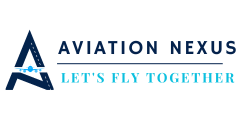In the ever-evolving landscape of the airline industry, IndiGo, India’s largest airline by market share, finds itself at a crossroads. Rahul Bhatia, the co-founder and interim CEO, has been steering the airline through turbulent times, navigating challenges and opportunities alike. Now, with the prospect of introducing the Airbus A350 into its fleet, Bhatia faces a critical decision: uphold the low-cost model that has been IndiGo’s hallmark, or venture into the realm of full-service carriers, potentially pulling a rabbit out of the hat in the process.
Since its inception in 2006, IndiGo has prided itself on its no-frills, low-cost approach. By focusing on operational efficiency, maintaining a young fleet, and offering a straightforward service, the airline has captured a significant portion of India’s air travel market. This strategy has allowed IndiGo to consistently turn profits even in the face of intense competition.
However, as the airline industry undergoes rapid transformation, fueled by changing consumer preferences and technological advancements, the lines between low-cost and full-service carriers have begun to blur. Passengers increasingly demand more than just a seat from their airline experience; they seek comfort, convenience, and personalized services.
Against this backdrop, the prospect of IndiGo introducing the Airbus A350, a wide-body aircraft typically associated with full-service carriers, raises eyebrows. The A350 promises enhanced passenger comfort, longer range capabilities, and greater operational efficiency. While this could open up new routes and markets for IndiGo, it also challenges the airline’s low-cost ethos.
Rahul Bhatia’s decision regarding the A350 reflects the delicate balance between maintaining IndiGo’s competitive edge as a low-cost carrier and meeting the evolving needs of passengers. Embracing the A350 could signal a strategic shift towards a hybrid model, offering a blend of affordability and enhanced services—a move that could attract a broader spectrum of travelers while retaining IndiGo’s core customer base.
However, such a transition is not without its risks. Introducing a wide-body aircraft into the fleet entails significant investments in infrastructure, training, and marketing. Moreover, straying too far from the low-cost model could dilute IndiGo’s brand identity and erode its competitive advantage.
Nevertheless, Rahul Bhatia’s track record suggests that he is not one to shy away from bold moves. Under his leadership, IndiGo has consistently demonstrated agility and resilience in adapting to changing market dynamics. Bhatia’s ability to innovate and execute has been a driving force behind IndiGo’s success story thus far.
As IndiGo contemplates the A350, it stands at a crossroads—one that will shape the airline’s trajectory for years to come. Rahul Bhatia’s decision will not only influence IndiGo’s competitive positioning but also set a precedent for the broader airline industry in India and beyond.

